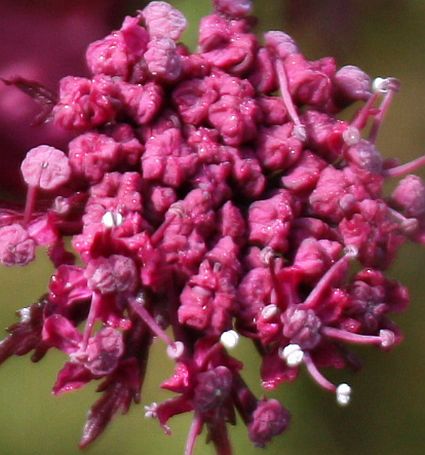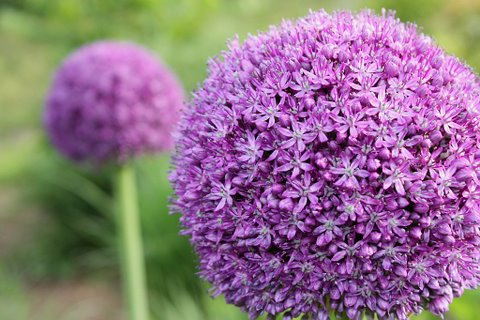All right people…what is it?
*evil hand wringing and maniacal laughter*
[albeit quiet maniacal laughter, as not to disturb office mates]

Some great guesses!
Most identified the seed head of a Clematis – this one is Clematis tibetana, also known as Orange Peel clematis due to the leathery golden-orange petals/bracts. It’s a late bloomer anyway, and the profusion of swirly seed heads sparkle in the autumn sun. Quite vigorous when compared to the large-flowered clematis species and hybrids; more along the lines of sweet autumn clematis (Clematis terniflora). Covers small structures and slow-moving terrestrials in a single season.

The second was a stumper – though most folks were barking up the right tree/annual/perennial and guessing some apetalous members of the Asteraceae.

It’s Ajania pacifica (most of us learned it as Chrysanthum pacificum or Dendranthema pacificum) or "gold and silver chrysanthemum". A very well-behaved, low, mounding, old-school perennial; best with good drainage and plenty of sun. One of the last perennials to bloom for us; it’s also very frost-tolerant. The gray-green foliage is edged in white, and despite several hard frosts, still looks great.
Not many guesses this week – too many Halloween parties? In any case, Hap was correct – this is a closeup of the growing edge of Euphorbia lactea ‘Cristata.’ The "candles" on the edge are tiny leaves that appear whenever water is abundant but shed quickly during dry periods:

Thanks for playing, and Happy Halloween!
The glorious Allium ‘Globemaster.’

Michelle and Laura B. nailed it, and Jennie had the correct genus.
A little taxonomic correction – it is NOT A. giganteum, as many catalogs and articles suggest, but rather a hybrid between A. macleanii and A. christophii; described by the breeder himself – Jan Bijl – in a 1990 issue of The Plantsman (vol. 12 pp 152-156). Unless I’ve totally messed up and this is ‘Gladiator,’ not ‘Globemaster.’ They’re quite similar.
Big blobs of floriffic fun, none the less. A bit pricey at $5 to $8 per bulb, though. I only have five in the ol’ home garden – that’s about as "en masse" as I can afford.

Can’t get anything past our blog readers! Yes, from the highly cropped photo on Friday two readers quickly recognized emerging Indian pipe (Monotropa uniflora):

These plants have no chlorophyll, instead relying on fungal partners who colonize both their roots and the roots of nearby photosynthetic plants. So ultimately this is a parasitic species, as it takes resources from the photosynthesizers in its root network without reciprocal benefit.
These are not commonly found plants, so I think it’s really cool that they appeared in such profusion in a home landscape.